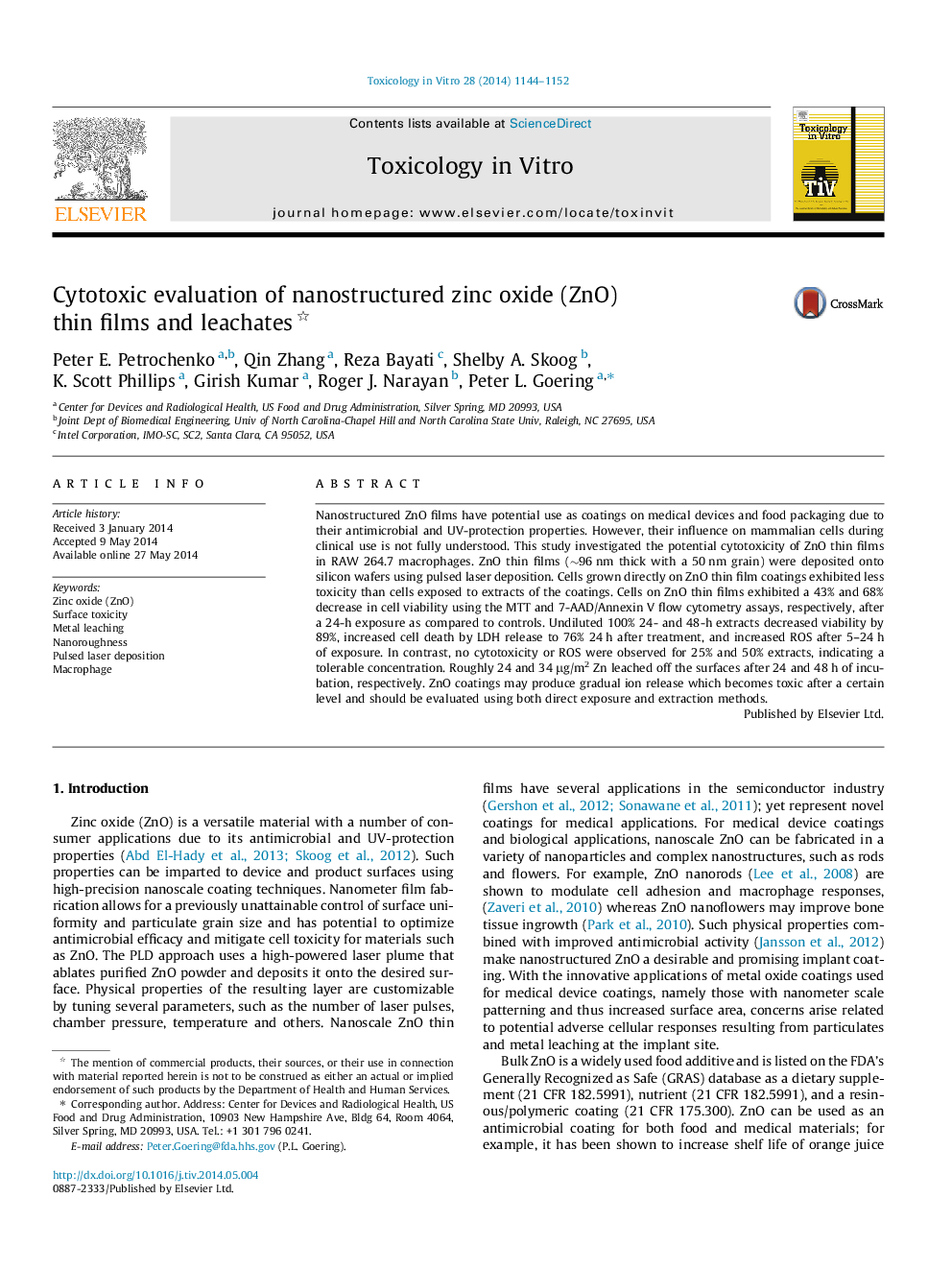| Article ID | Journal | Published Year | Pages | File Type |
|---|---|---|---|---|
| 5861941 | Toxicology in Vitro | 2014 | 9 Pages |
â¢96 nm-thick ZnO films with nm grains were coated onto Si wafers.â¢Direct exposure to the ZnO layer caused apoptosis and necrosis.â¢Roughly 24 and 34 μg/m2 of Zn leached off the surfaces after 24 and 48 h.â¢Exposure to a single dose of extract was more toxic than growing cells on ZnO.â¢ZnO thin films in packaging and devices should be evaluated for potential adverse health responses.
Nanostructured ZnO films have potential use as coatings on medical devices and food packaging due to their antimicrobial and UV-protection properties. However, their influence on mammalian cells during clinical use is not fully understood. This study investigated the potential cytotoxicity of ZnO thin films in RAW 264.7 macrophages. ZnO thin films (â¼96 nm thick with a 50 nm grain) were deposited onto silicon wafers using pulsed laser deposition. Cells grown directly on ZnO thin film coatings exhibited less toxicity than cells exposed to extracts of the coatings. Cells on ZnO thin films exhibited a 43% and 68% decrease in cell viability using the MTT and 7-AAD/Annexin V flow cytometry assays, respectively, after a 24-h exposure as compared to controls. Undiluted 100% 24- and 48-h extracts decreased viability by 89%, increased cell death by LDH release to 76% 24 h after treatment, and increased ROS after 5-24 h of exposure. In contrast, no cytotoxicity or ROS were observed for 25% and 50% extracts, indicating a tolerable concentration. Roughly 24 and 34 μg/m2 Zn leached off the surfaces after 24 and 48 h of incubation, respectively. ZnO coatings may produce gradual ion release which becomes toxic after a certain level and should be evaluated using both direct exposure and extraction methods.
